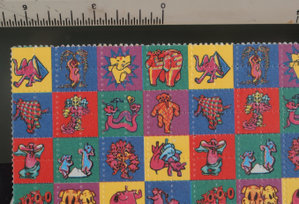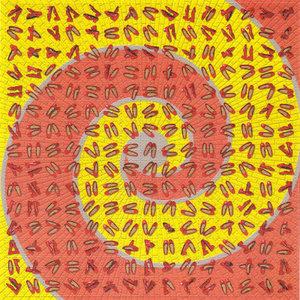LSD
D-lysergic acid diethylamide, commonly called acid, LSD, or LSD-25, is a powerful semisynthetic psychedelic drug colloquially measured in "hits" or "tabs". An average single dose of LSD during the 1960s was between 100 and 150 micrograms, a tiny amount roughly equal to one-tenth the weight of a grain of sand. Today, a typical single dose of LSD is as low as 25-50 micrograms. Threshold effects can be felt with as little as 20 micrograms. more...
The effects of LSD can vary greatly, depending on factors such as previous experiences, state of mind and environment, as well as dose strength. Generally, LSD causes expansion and altered experience of senses, emotions, memories, and awareness for 8 to 14 hours. In addition, LSD usually produces visual effects such as moving geometric patterns, "trails" behind moving objects, and brilliant colors. LSD does not produce hallucinations in the strict sense but instead illusions and vivid daydream-like fantasies, in which ordinary objects and experiences can take on entirely different appearances or meanings. At higher concentrations it can cause synaesthesia. The drug sometimes spurs long-term or even permanent changes in a user's personality and life perspective.
LSD is synthesized from lysergic acid, derived from ergot. Ergot is a grain fungus that typically grows on rye. LSD is sensitive to oxygen, ultraviolet light, and chlorine, especially in solution. However its potency may last years if stored away from light and moisture in a freezer. In pure form it is colorless, odorless, and mildly bitter. LSD is typically delivered orally, usually on a substrate such as absorbent blotter paper, a sugar cube, or gelatin.
Introduced by Sandoz Laboratories as a drug with various psychiatric uses, LSD quickly became a therapeutic agent that appeared to show great promise. However, the extra-medical use of the drug in western society in the middle years of the twentieth century led to a political firestorm and government insider panic that resulted in the banning of the substance for medical as well as recreational and spiritual uses. Despite this, it is still considered a promising drug in some intellectual circles.
Origin
"LSD" is an initialism formed from the German chemical name of the compound, Lysergsäure-diethylamid. It was first synthesized in 1938 by Swiss chemist Dr. Albert Hofmann at the Sandoz Laboratories in Basel as part of a large research program searching for medically useful ergot alkaloid derivatives. Its psychedelic properties were unknown until 5 years later, when Hofmann, acting on a hunch, returned to work on the chemical. He attributed the discovery of the compound's psychoactive effects to the accidental absorption of a tiny amount through his skin on April 16, which led to him testing a larger amount on himself for psychoactivity (full story).
Until 1966, LSD and psilocybin were provided by Sandoz Laboratories free of charge to interested scientists. The use of these compounds by psychiatrists to gain a better subjective understanding of the schizophrenic experience was an accepted practice. Many clinical trials were conducted on the potential use of LSD in psychedelic psychotherapy, generally with very positive results.
Read more at Wikipedia.org



